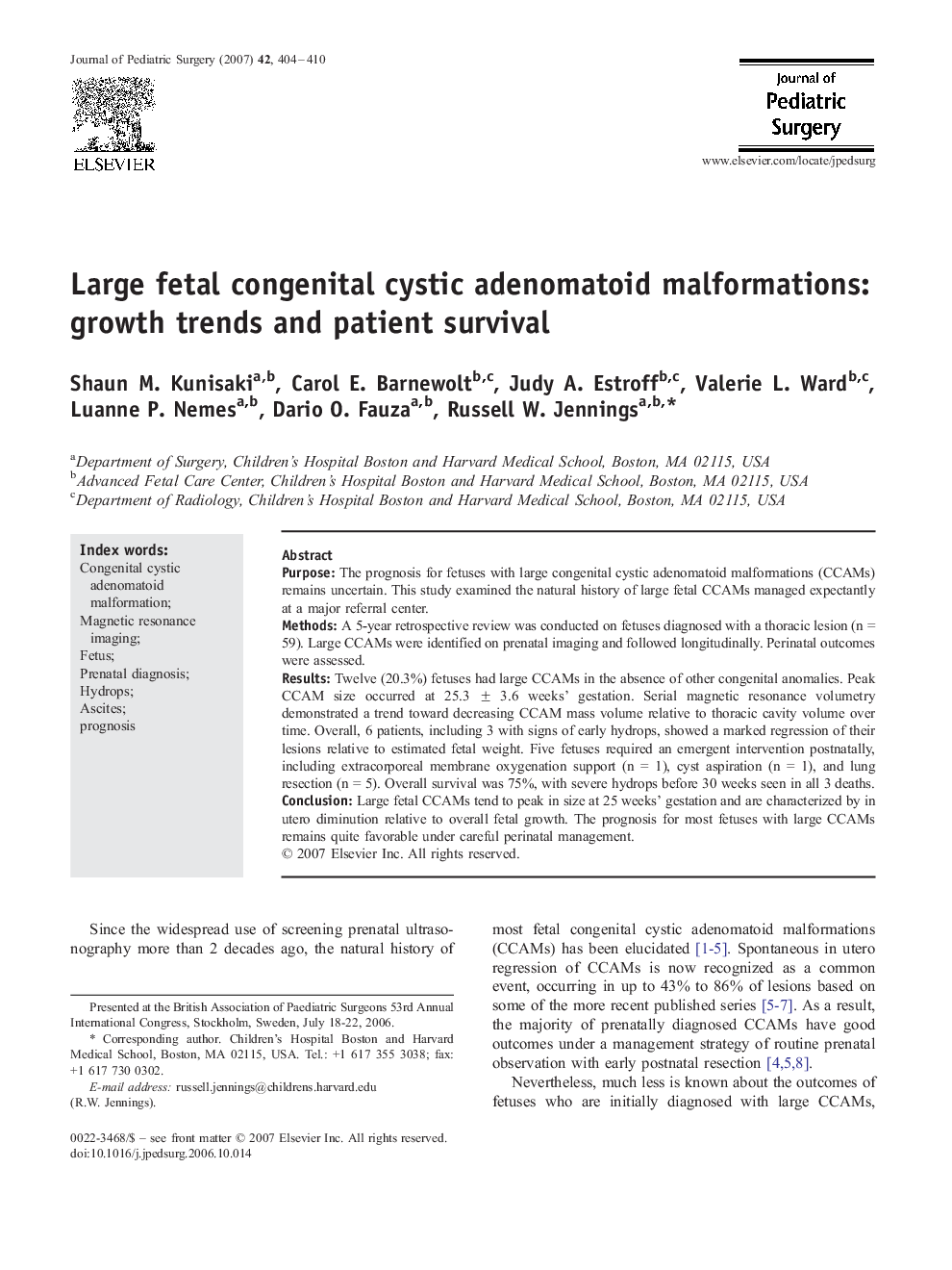| Article ID | Journal | Published Year | Pages | File Type |
|---|---|---|---|---|
| 4160568 | Journal of Pediatric Surgery | 2007 | 7 Pages |
PurposeThe prognosis for fetuses with large congenital cystic adenomatoid malformations (CCAMs) remains uncertain. This study examined the natural history of large fetal CCAMs managed expectantly at a major referral center.MethodsA 5-year retrospective review was conducted on fetuses diagnosed with a thoracic lesion (n = 59). Large CCAMs were identified on prenatal imaging and followed longitudinally. Perinatal outcomes were assessed.ResultsTwelve (20.3%) fetuses had large CCAMs in the absence of other congenital anomalies. Peak CCAM size occurred at 25.3 ± 3.6 weeks' gestation. Serial magnetic resonance volumetry demonstrated a trend toward decreasing CCAM mass volume relative to thoracic cavity volume over time. Overall, 6 patients, including 3 with signs of early hydrops, showed a marked regression of their lesions relative to estimated fetal weight. Five fetuses required an emergent intervention postnatally, including extracorporeal membrane oxygenation support (n = 1), cyst aspiration (n = 1), and lung resection (n = 5). Overall survival was 75%, with severe hydrops before 30 weeks seen in all 3 deaths.ConclusionLarge fetal CCAMs tend to peak in size at 25 weeks' gestation and are characterized by in utero diminution relative to overall fetal growth. The prognosis for most fetuses with large CCAMs remains quite favorable under careful perinatal management.
